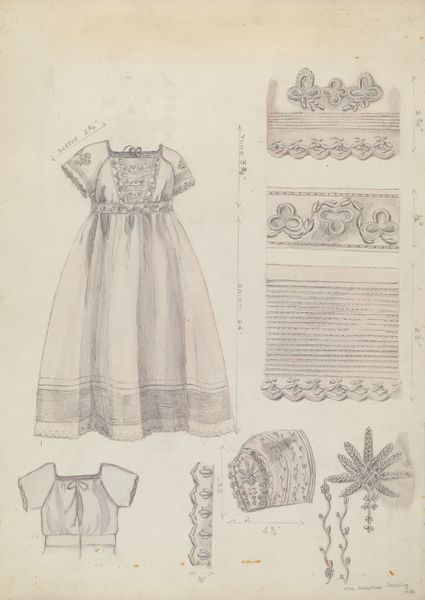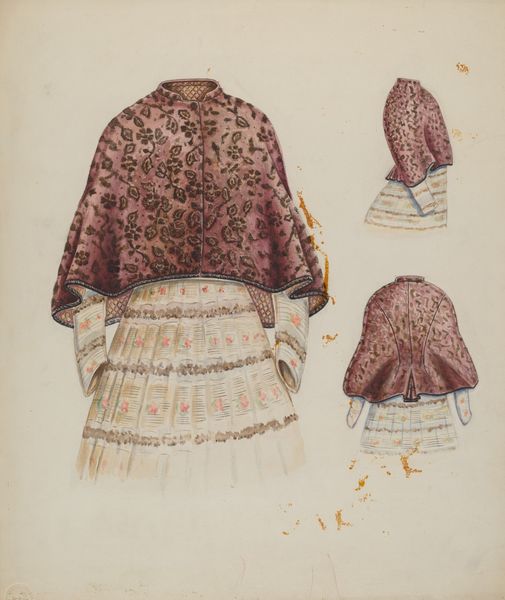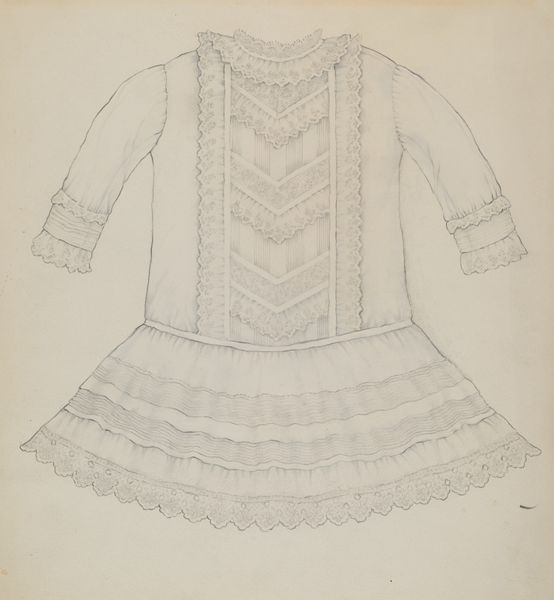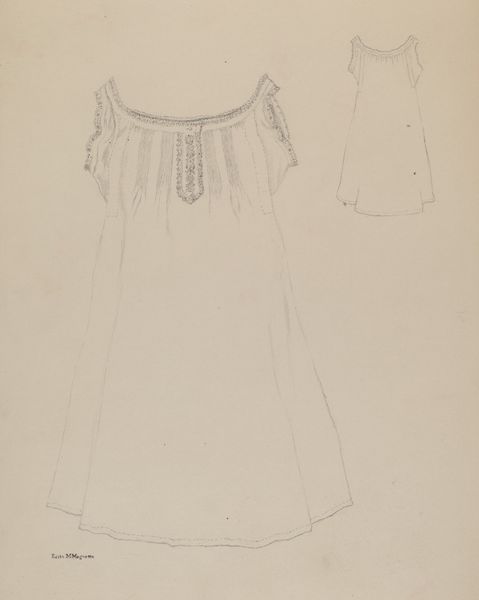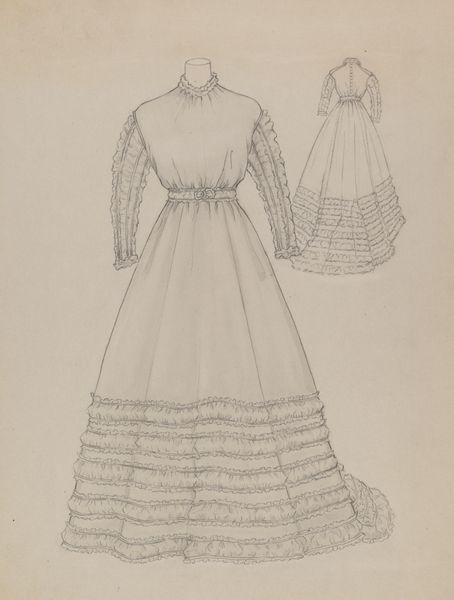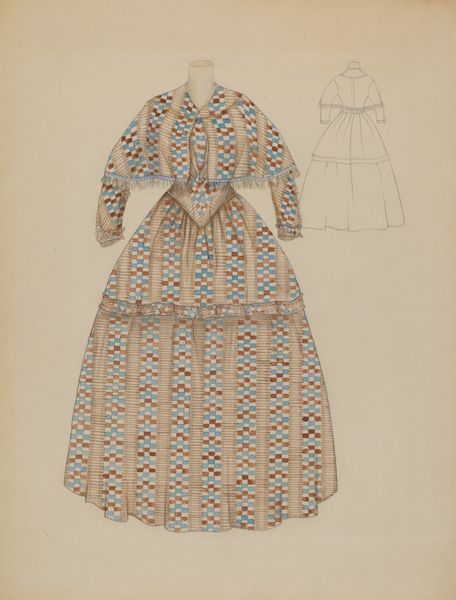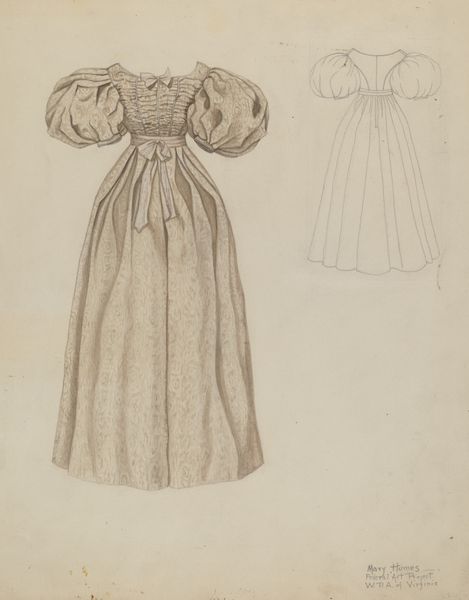
drawing, textile, paper, pencil
#
drawing
#
textile
#
paper
#
pencil drawing
#
pencil
#
realism
Dimensions: overall: 30.6 x 40.8 cm (12 1/16 x 16 1/16 in.) Original IAD Object: 32" long
Copyright: National Gallery of Art: CC0 1.0
Curator: Looking at this soft pencil drawing of an apron transports me. The delicate details of the textile, captured with such precision... there’s almost a reverence present. Editor: Indeed. What we see here is Carl Buergerniss's "Apron," made circa 1940. Buergerniss renders this everyday object with extraordinary attention, almost elevating craft to fine art. It's pencil on paper, and it makes one consider the role and status of domestic labor during this era. Curator: Exactly. I'm drawn to the painstaking rendering of the lace trim. Think of the time invested—both by the lacemaker originally and then Buergerniss, who’s captured it here in pencil. It speaks volumes about value, not just artistic value, but social value, assigned or unassigned, to these tasks. The artist truly focused on elevating that material with drawing. Editor: And notice the contrast! The apron takes center stage beside a flat rendering. The juxtaposition invites a comparison between the actual garment and its representation. How do cultural institutions value and display these two different modes of production and creativity? Why are we seeing a drawing of the garment and not the apron? Curator: It prompts thoughts about art’s purpose, certainly. It goes beyond simple reproduction to become almost a document, but also raises questions about women’s work and its representation. Did the apron itself survive? The pencil drawing did, but the work needed to create it risks invisibility. Editor: It underscores a historical amnesia—one that we as a society continue to reckon with even now, particularly around women's artistry and craftsmanship, doesn't it? By presenting this mundane item in such detail, is Buergerniss offering some comment on labor, skill, and recognition? Or is he simply creating something pretty? The beauty is undeniable. Curator: Yes, it leaves me wondering about what other everyday textiles were rendered similarly, what was memorialized or elevated in these pencil renderings versus thrown aside, forgotten. Editor: A powerful piece, isn't it, reminding us of the layers of production, consumption, and even institutional acceptance inherent in any artwork, regardless of how humble the subject matter appears.
Comments
No comments
Be the first to comment and join the conversation on the ultimate creative platform.

